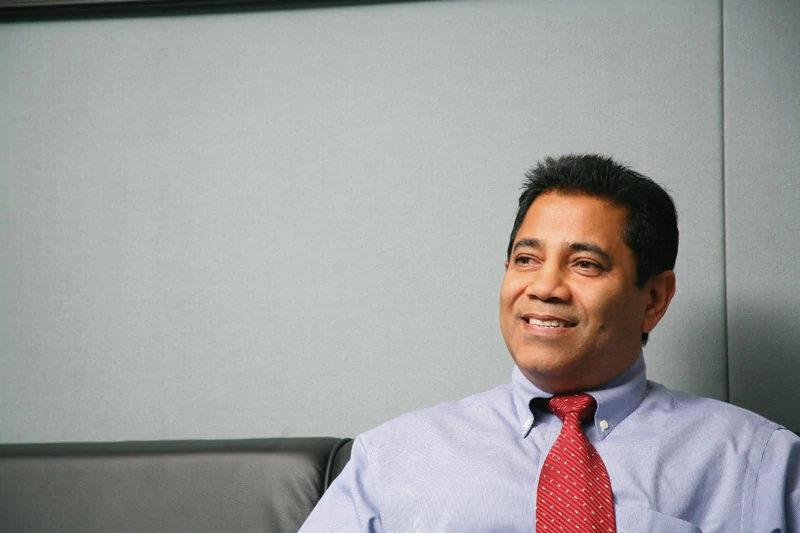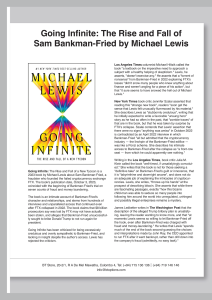
As an ‘entrepreneur par excellence’, Chairman of Sampath Bank Arthur Senanayaka, has been in the forefront of Sri Lankan business circles for the past three decades. His commitment to continuous progress and zest for life have been reflected in the success of the many industries that he has pioneered and organisations that he has headed. In this interview with Business Today, he looks at the advancement of Sampath Bank and its vision to become the ‘Best Bank’ in Sri Lanka.
Interviewed by Keith Bernard | Compiled by Ayesha Inoon | Photography by Menaka Aravinda
You are a progressive individual and someone who has constantly pioneered new industries, products and technologies in Sri Lanka, can you tell us a bit about yourself, and how you built your businesses in Sri Lanka?
I was educated at Mahinda College, Galle and then went overseas for further studies. Thereafter I worked in Europe, South America and South East Asia and was in charge of the region as a Technical Engineer for a German company. In 1980, I returned to Sri Lanka on hearing of the positive economic growth.
I started my first company here in 1980. It was called Germania which was associated with machine tools and subsequently fertiliser. This became the third largest fertiliser company and within a very short span it became a multimillion-dollar business. Thereafter we further expanded and ventured into being the leading supplier of state-of-the-art machinery for food processing and packaging.
At this time there were many development projects coming up in Sri Lanka with aid and grant from different countries. With a German aid projects, namely Randenigala and Ranthambe dam projects and with technical support from a then large German freight forwarder, Herman Ludwig, I started a logistics company, with total logistics support comprising, warehousing and transport facilities. With the experience gained in international shipping, I was responsible in obtaining the first BOI joint venture shipping liner agency with Neptune Orient lines Singapore and became the Chairman of that company. With the acquisition of American President Lines by them, I was appointed chairman of American President Lines Colombo, and today we are one of the main hub operators at the Colombo Port. In order to support this industry, I started one of the largest container terminals to cater to two of the largest shipping lines namely, Maersk Shipping Line and American President Lines. With my background and affiliation to Singapore I was appointed the honourary trade representative to the Government of Singapore for the Singapore Trade Development Board.
I was the pioneer in the introduction of cellular communication to the region and started Celltell, the first cellular company in South Asia. In the communication industry, I also started the first mobile trunk radio system called Trunknet, with the technology from Motorola, who is the leading two-way communication supplier in the country today.
I also brought the first 24 hour terrestrial television transmission to the country. ART TV broadcasts CNN and local business news through its channel 24/7.
I have been a Founder Director of the bank and its Deputy Chairman since 1998 prior to being appointed as chairman last year. I am the Chairman of IWS Holdings – a conglomerate with diversified business interests in many industries in the country.
I like challenges and new technology which connect people together in this ever changing environment. I don’t like to hold on to ‘a’ business, if there is a profitable proposition, I’d rather sell that business and move to the next.
You are also one of the largest shareholders of Sampath Bank and probably its longest serving Board member, and this must almost emotionally attach you to the bank. As such, how would you like to characterise Sampath Bank?
Not only me, the entire staff is so close in heart to the bank. We call it ‘Sampath Family’. This exceptional loyalty is something unique to our bank.
You have been the Deputy Chairman for a very long time and now that you are the Chairman, do you see a need for a change in course or direction for the bank?
Yes. I see the need for a change in course or direction for the bank, to face the new challenges in the market. We have adopted the new vision of becoming the ‘National Bank’ in the true sense of the words, catering to all sectors and segments of the market across the country, on a uniformed basis. That is why we have embarked on an ambitious branch expansion programme in the newly liberated North and East. Secondly, we wanted to improve overall performance and become a much larger player in the industry and to emerge as the ‘Best Bank in Sri Lanka’.
It is a foregone conclusion that the Board is in the final analysis responsible for the strategic direction of the bank, but your seniority and position within the Board probably give you strong influence when it comes to decisions. How easy or difficult is it for you to choose between rationality over emotionality when making decisions?
There is no difficulty in choosing between rationality and emotionality when making corporate decisions, as decisions are taken collectively at all important levels, namely, the Board, Management and various committee levels. These committees are represented by professionals and experienced bankers drawn from different disciplines, who make positive contributions. We deliberate every issue at length and take collective decisions rationally.
We have adopted the new vision of becoming the “National Bank” in the true sense of the words, catering to all sectors and segments of the market across the country, on a uniformed basis
Talking of Sampath Bank itself, is it fair to state that Sampath Bank has in the past been less aggressive in expanding and building market share compared to other local banks?
Yes. At the start, the bank was expanding aggressively. Thereafter, the progress slowed down to some extent. Once again we plan to expand aggressively in future, however, without compromising on the credit quality and business ethics. In this manner, we will have a controlled expansion programme, with the aim of achieving a higher market share.
At the time of its origins the bank had a narrowly defined perspective in positioning itself, if I may say so. How has that perspective taken shape over the years?
I do not think that at the start we deliberately had any narrowly defined market positioning for our bank. There could have been different market perceptions at that time. We want to correct these perceptions and become a National Bank in a true sense. As a deposit taking institution we cannot have discriminations.
What exactly is your market positioning strategy and how would you characterise your typical customer profile?
We will position our bank as the ‘Bank for savings in Sri Lanka’, which offers value added products catering to all segments of the market and also covering every stage in the life cycle of a depositor. In addition, we want to be the bank that provides excellent service quality among all banks.
In its early stages Sampath Bank enjoyed a reputation for its IT prowess. Do you think you can still claim an advantage at a time modern banking is being defined and led by developments in ICT (Information & Communication Technology)?
Sampath was the bank, which revolutionised the banking industry in terms of IT. Though, other banks too have improved their IT platforms, we still have an edge over most of them. We are determined to preserve our IT superiority among the local banks in the future as well and constantly up-grade our IT systems and introduce IT related new products to meet the new demands of the market.
The last year was not the best for the financial sector the world over and in Sri Lanka in particular where inflation and interest rates were exceptionally high. How did you counter the adversities and fare as a financial institution?
Yes. Last year and the early parts of this year were not very conducive for business. The business growth was adversely affected by the world financial crisis, high inflation and high interest rates in the local market. Despite all these challenges, our bank recorded very satisfactory financial results both in 2008 and the period up to now this year. We have out-performed most other banks in terms of profit growth, despite the low asset growth and adverse macro economic factors. This was achieved primarily through taking the right action at the right time.
Last year, we strengthened the bank with a new management, with seasoned bankers drawn from the market and appointed three executive directors to the Board. The new management, under the guidance of the Board took several measures in the right direction. That is how we managed this difficult period and emerged with good results.
Deposit mobilisation and growing asset value must have been arduous under such conditions. Low deposit mobilisation and low asset growth coupled with restrictive monetary policies could potentially stifle growth, but despite these adversities you reported an after tax profit growth of about 27%. How did you manage to achieve that feat?
Deposit mobilisation became a tough task mainly due to the high inflation, which eroded the saving capacity of people and the competition from Government Securities which offered very high rates. On the other hand, the high interest rate scenario discouraged the credit demand in the economy and pushed the NPLs up. Despite these challenges which crippled business growth, Sampath Bank achieved a remarkable growth in profits. This was achieved mainly through better managing the fund base of the bank and the interest rate structure thereon and thereby improving our interest margins.
With the global financial markets in crisis how did you finance your funding gaps?
We managed our funding gaps through prudent fund/liquidity management measures taken through the bank’s ALCO(Asset Liability Committee). This was a period during which international credit lines virtually dried up, due to the international crisis. In the circumstances, we relied more on domestic funds. Through new products launched such as ‘Kalin Cash’ and competitive interest rates offered, we attracted more deposits in the market. On the other hand, we maintained a controlled asset growth within our resources, whilst restricting lending in certain areas such as mortgage-lending and leasing, which were exposed to high risk, in the high interest rates scenario that prevail. The lowering of the Statutory Reserve Ratio by the Central Bank too helped all banks to overcome the liquidity issues during this period.
The less than desirable market conditions were compounded by market shocks triggered by reported financial scandals, and this led to a near run on financial institutions by deposit holders. How did this impact on Sampath Bank?
Yes. The certain financial scandals and shocks in the local market sent shock waves through the financial industry. The public confidence in the financial institutions, especially in the private-sector financial institutions was shaken to some extent. Even Sampath Bank had to face the impact particularly in the first quarter of this year. We also recorded an almost zero growth of deposits in the first quarter of this year. But through our corporate action, we were able to reverse the trend and achieve a commendable growth in deposits in the second and third quarters of the year. Our financial results during the first half of the year gave clear signals to the market on Sampath Bank’s financial strength and stability. Now the market knows that Sampath is a well run bank which is different from some of the other players in the industry. The best indicator of public confidence in the Bank is our share price which experienced a rapid increase surpassing that of many other leading players in the industry.
How did you fare in capital adequacy to finance advances, loans and panic drawings if any?
We have been able to manage the capital adequacy ratios prudently during this period. Because of the slow growth in customer advances, capital was not under any severe pressure. The main source of capital during this period was the bank’s retained profits, which were sufficient to maintain capital adequacy well above the required levels. There was no need to infuse any external capital.
Are you sufficiently financed to meet the Tier I and Tier II BASEL II requirements?
Yes, We are very comfortable in Tier I and II capital under the BASEL II requirements. Currently, the Total Capital Adequacy Ratio is well above 12% after recognising the unaudited profits for the year, but before declaring any dividends for this year. With the projected profits, we are confident that the capital adequacy ratios will improve further by the end of this year.
An increase in NPLs (Non Performing Loans) for most banks was an issue due to adverse economic conditions. How significant has this been to Sampath Bank in recent times?
In line with the industry trends, the NPL Ratio of Sampath Bank too rose during the recent past. However, due to several far reaching measures being taken by the bank, the situation is fast improving.
The centralisation of the credit disbursement system, the strengthening and re-organisation of the Central Recoveries Department of the bank and flexibility maintained by the bank to arrive at negotiated settlements with borrowers who are genuinely in difficulty, were some of the key steps taken in this direction.
How did the increased general credit and market risk exposure affect you in meeting the BASEL II requirements?
There was no marked increase in general credit risk exposure of the bank, under the BASEL II requirements. One reason was the absence of any significant credit growth in the bank, which is in line with the industry trends. Secondly, Sri Lanka is currently implementing BASEL II under the Standardised Approach for credit risk. Under this approach, credit risk of the borrowers is measured through external credit ratings obtained by them from external credit rating agencies. However, the credit rating culture in this country is very poor and as a result very few borrowers have got any credit ratings from these agencies.
Consequently, most of the borrowers will remain as unrated, which means their risk weighting remains at 100% of the loan outstanding, which is as same as BASEL I. Therefore, there is no significant increase in our credit risk exposure compared to that under BASEL I.
I Firmly Believe The Economic Downturn Is Now Behind Us, But It Takes Time For The Business Confidence To Build Up. The War Has Ended, Giving Tremendous Opportunities For The Economic Integration Of The Northern & Eastern Provinces With The Rest Of The Economy
As far as market risk is concerned, this is not the major risk in a less-sophisticated market such as Sri Lanka. In the total risk profile of a typical Sri Lankan bank, market risk is not more than 10%. On the other hand, Market Risk was already captured even under BASEL I. There was no change in this position under BASEL II.
Nevertheless, we have developed a robust risk management system across the bank to properly manage all banking and non-banking risks of the bank and the Board Sub-Committee on Risk Management is playing a vital role on this. We also strengthened the risk management structure of the bank by recruiting a Chief Risk/ Compliance Officer recently.
You are also a successful entrepreneur in your own right, and in your view do you think the economic downturn that affected Sri Lanka is now behind us, or still prevailing?
Yes, I firmly believe the economic downturn is now behind us, but it takes time for the business confidence to build up. The war has ended, giving tremendous opportunities for the economic integration of the Northern and Eastern Provinces with the rest of the economy. These two provinces represent one third of the country and two thirds of the ocean front, but made an insignificant contribution of about 8% to the GDP in the recent past. With the development projects that are being contemplated, the two provinces could make a significant contribution to the GDP in the future. In addition, tourist arrivals have picked up, foreign remittances are growing and foreign investments are coming in at a significant rate. However there is more room for development in which both the public sector and the private sector will have to play their roles effectively. We also need to enforce more discipline at all levels.
Export growth is reported to have slid by about 17% so far this year. How valid is that observation measured by your bank’s current performance?
Even in our bank the volumes of export financing naturally came down to some extent, with the exporters losing their overseas markets, as a result of the world crisis. Now, we can see tea exports are picking up. However, the apparel industry has not yet shown much improvement, whose future is still clouded by the uncertainties associated with the outcome of the GSP+ issue.
The end of the three decade internal conflict that plagued the country offers renewed hope for prosperity for all Sri Lankans and businesses alike. With conditions retuning to normal all local banks lost no time to get in to override mode towards capturing a piece of the Northern and Eastern markets. You too have made your presence felt and opened new branches there. What is your game plan, and how do you expect this development to feature in your overall business plan?
Yes, as I mentioned earlier, we have started our expansion plans in the Northern and Eastern provinces. We had a few branches in the East but none in the North except Vavuniya. However, according to the plans, we will have five branches in the North and nine in the East by the end of 2009. This expansion drive will continue in 2010 as well. Our main business focus will be deposit mobilisation and remittances, for which there is high potential in the two provinces. In addition, we are exploring the possibility of extending Credit under Micro Financing and Agricultural loans. There is also very good potential for Pawning. All branches in the two provinces are fully computerised branches, capable of offering the same service standards, as offered elsewhere in the country.
In the past Sampath Bank had been an acquisition target for aggressive movers in the industry. What safeguards have you set in place to prevent future takeover activity if at all?
In the context of the current regulatory framework, hostile acquisitions are extremely difficult in the banking industry. However, we do not depend entirely on this regulatory safeguard to preserve our corporate sovereignty. High market capitalisation of our bank will be a deterrent against such acquisitions, even if permitted.
You own a large stake and exert sufficient influence over Union Bank. Under your guidance how is Union Bank performing and how significant is it as an asset to your bank?
When Union Bank faced financial difficulties in the past, it was Sampath Bank, which offered a restructuring package, under the supervision of Central Bank. Currently we have a stake of around 17% in Union Bank. As this bank is not an associate or a subsidiary of our bank, we cannot appoint directors to the Board. However, we have two directors functioning in an advisory capacity to that bank.
Sampath Bank has not yet ventured out of the country. Is overseas expansion not part of your overall future plans?
No. Sampath already has a significant stake of around 18% in a leading financial company in Bangladesh. Sampath is the single largest shareholder of this company, with two directors on the Board. We have made a significant contribution for the progress of this company, which is currently doing well in that market. We are also exploring the possibility of entering the other regional markets, at the right time in the future.
What products have you introduced to entice migrant remittances?
We have introduced an e-remittance service to entice migrant workers to remit their money expeditiously and at a very low cost. In addition, we have deployed BOPs at several locations in the Middle East to promote remittances. We have also other plans in the pipeline, to further promote the e-remittance business in the near future, which will be announced shortly.
Many executives when asked what they think is their key resource, state their human capital. In the service industry and in particular the banking industry human capital is probably a scarce and key resource. Do you have a view, and at Sampath Bank what do you do to build this resource strength?
Yes, Human Capital is a major resource for any bank including Sampath. We have a very talented, educated and a young staff at Sampath, which is a key strength of the Bank. To develop this resource, we need to give them a clear direction, goals and objectives and I think we have been successful in providing all these. What needs to be done is to further motivate them to achieve better results, through inculcating a target driven culture within the bank. We have an HRD Board sub-committee headed by professionals, guiding the bank in the proper direction.
I know that you have always been active in promoting and building Sampath Bank, but now that you are officially the Chairman of the Bank, during your tenure what would you cite as your key mission for the bank?
My key mission as Chairman is to ensure the Sampath will become a leading bank and a vibrant player which sets trends in the industry. To be the ‘Best Bank’ in Sri Lanka and be ranked in the ‘Top 10 Companies’ are other targets. In addition, I want to ensure better prospects are offered to our shareholders and all other stakeholders.
May I ask you as a gifted entrepreneur and businessman what do you see we need as a country to move to the next phase of growth and how soon do you think it can happen?
In my view, what needs to be done as a country to move to the next phase of growth, is to position our country on the correct strategic path and provide it with a new vision of becoming a financial hub in the region. We have most of the resources needed for this, including the geographical location, biodiversity, educated work force etc. However, certain things need definite improvements such as the infrastructure developments, productivity improvements and better fiscal management. With these things being put in place effectively, I trust within the next few years, Sri Lanka will witness a rapid economic growth in the near future. However, we need to ensure a fair distribution of the development-gains among the people for their efforts, to sustain the growth momentum.






